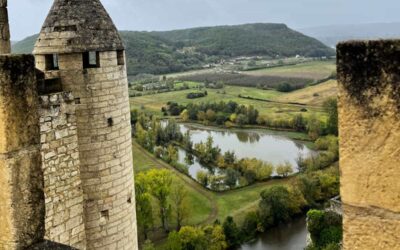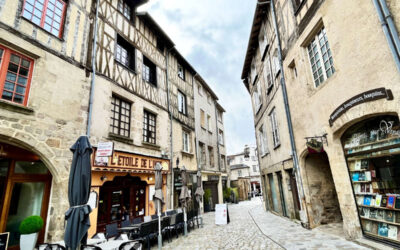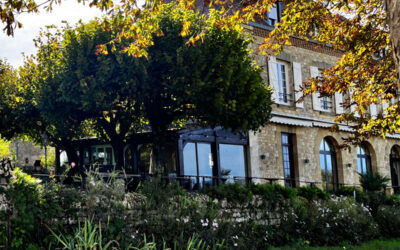Nestled in the picturesque Dordogne region of southwestern France, the Château de Castelnaud stands proudly atop a limestone cliff, overlooking the serene Dordogne River. This fortress, with its rich history and breathtaking views, is a must-visit for medieval history enthusiasts and travellers interested in the Hundred Years’ war.
Château de Castelnaud is famous as one of the most well-preserved medieval castles in the Perigord Noir area in Dordogne. It also helps that this was once the border of of the lands of Eleanor of Aquitaine.

The castle’s strategic location allowed it to control the vital river crossing and monitor traffic on the Dordogne River. But what really sets it apart is its unique approach to immersing visitors in the medieval era.
The castle proposes costumes, iron-making showcases, free tour guides and plenty of other animations, including firing real medieval weaponry. In addition, the château is located in Castelnaud-la-chapelle, one of the “most beautiful villages of France”.
So let’s have a look at what there is to see and do at Château de Castelnaud, shall we? Allons-y!
History
The history of Château de Castelnaud can be traced back to the 13th century. It’s name means “new castle” in the Occitan language, a local regional language that was once widely spoken here.
The original fortress that was built here was seized in 1214 by Simon de Montfort (Count of Leicester), who led the Albigean crusade against the Cathars. The fortress burnt down during the fighting and a new castle was built in its place.
Over the centuries, it underwent various modifications, with each successive owner leaving their mark on the castle’s architecture.

One of the most fascinating chapters in the castle’s history unfolded during the Hundred Years’ War between the French and the English. This was the frontier of the lands of Duchess Eleanor of Aquitaine.
When Eleanor married the King of England, her lands went with her, eventually inherited by her descendants, including her son King Richard the Lionheart.
The former castle of King Richard, Château de Beynac, is only 3 miles away from Château de Castenaud. As such, the surrounding area was conquered and reconquered several times during the Hundred Years’ war as successive English and French Kings fought for control.
At different points during the war, the Château de Castelnaud was held by both the French and the English, each side leaving its imprint on the structure. The imposing fortifications and the well-preserved medieval walls transport visitors back to an era of knights and political intrigue.
In 1442, French King Charles VII, ordered the siege of the castle then held by the allies of the King of England. After three weeks of seige, the castle surrendered for 400 crowns of gold to finally bring it under French control. The Hundred Years’ War ended 11 years later.
As you walk through the castle’s corridors, you can almost feel the echoes of the past, with the clatter of armor and the spirit of those who walked here in the past.
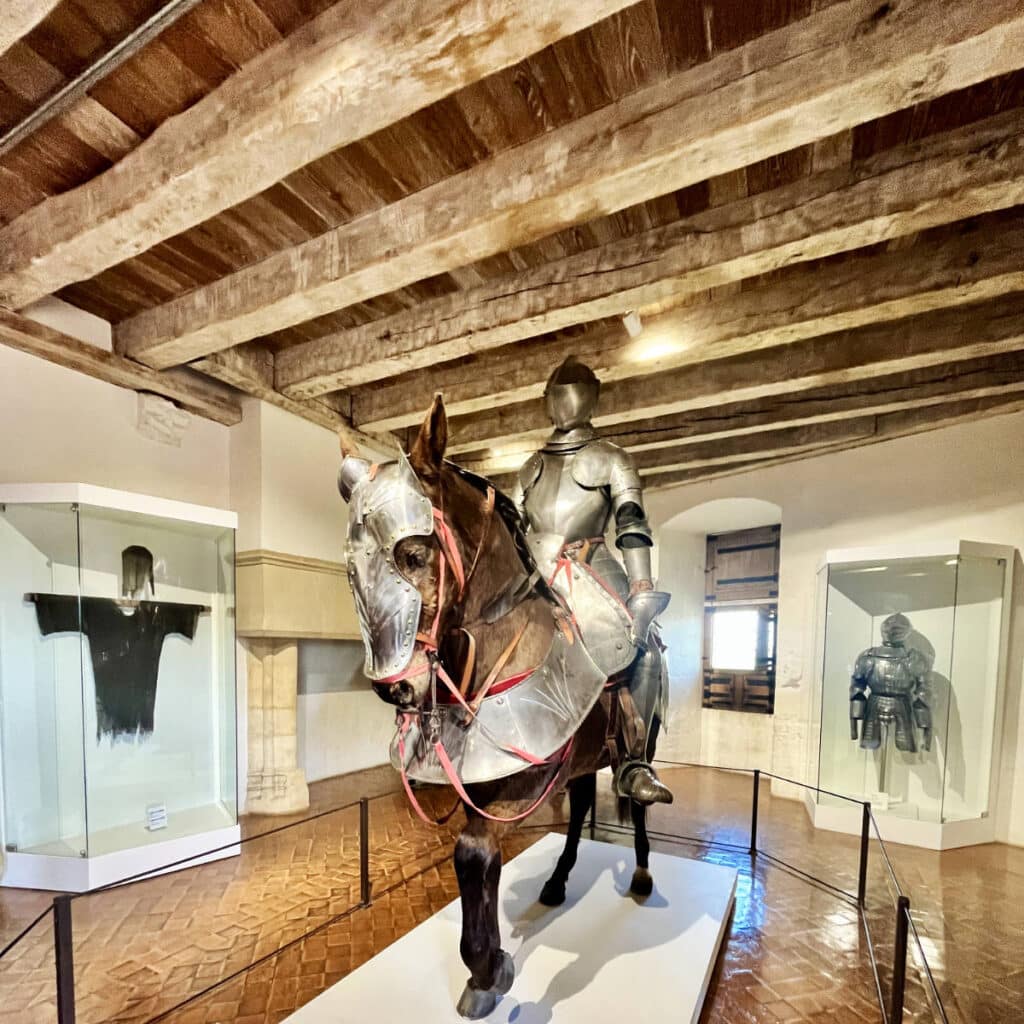
Inside the Château
As you approach the Château de Castelnaud, you will immediately notice its imposing keep. This was built as a towering symbol of medieval military prowess, offers defensive views of th Dordogne Valley.
As you enter into the Great Hall, one can imagine the grandeur of medieval life. This was the center of the castle, where feasts and gatherings unfolded within the ancient stone walls.

The castle has several exhibitions, including several workshops showing ironworks and weaponry. Depending on the season, visitors of all ages can partake in hands-on activities, from trying their hand at archery to dressing up in costume.
There is an extensive collection of medieval weaponry, armor, and costumes providing a vivid depiction of the strategic importance of the castle during the tumultuous Hundred Years’ War.
Opposite the chateau’s inside walls, you will notice a giant trebeuchet along with other weapons. These weapons have exceptionally been recreated as life-size working models of siege engines from the Middle Ages.
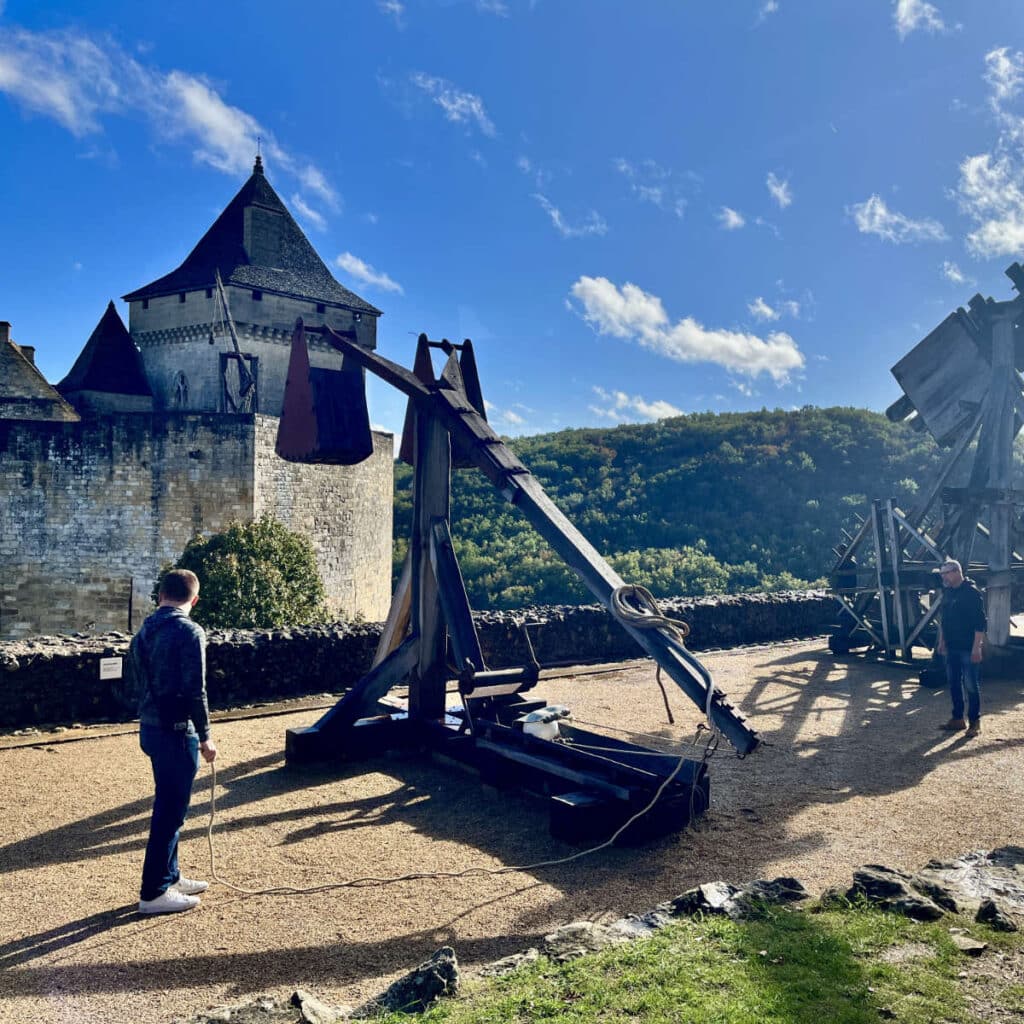
Along with a trebeuchet, you will also see a perriere, mangonel, and a couillard. If you are not sure what these all are, not to worry, there is a free tour where some of the weapons are fired. (With appropriate safely measures of course!)
For those seeking a serene interlude, head over to the beautifully maintained gardens surrounding the castle and take the narrow alleys down to the village of Castelnaud.
How to get to Château de Castelnaud?
Château de Castelnaud is about 330 miles (535 km) from Paris and is about 125 miles (200 km) from Toulouse and Bordeaux. The only way to get to Château de Castelnaud is by car or bus.
If you are driving down from Paris, the closest big city along the way is Limoges, which is about 95 miles (160km) away. If you don’t wish to drive, there are organized tours leaving from Sarlat-la-Canéda that will take you around the sights around the Dordogne river.
How easy is it getting around?
The Château de Castelnaud is a historical monument, so it has not been readapted to modern accessibility standards. Strollers and wheelchairs will find it difficult to manoeuvre around the narrow staircases, etc.
You will need a car to get from the Château de Castelnaud to the nearby Château de Milandes which is about 4 miles away.
How much time should you spend?
About a day is enough in Château de Castelnaud and the village center, but you may want to stay longer to explore the surrounding countryside.
You may want make it your base as you explore the nearby towns of Sarlat-la-Canéda, Beynac-et-Cazenac, Rocamadour, Domme, La Roque Gageac, Lascaux caves, Gouffre du Padirac, etc.
When is the best time to visit?
Château de Castelnaud is a popular and lively attraction in the summer tourist season, with the Château’s animations attracting a lot of people. There are more activities at the castle during the summer, but be aware that there are also larger crowds.
In the last two weeks of April, the Château de Castelnaud takes part in the Château en Fête celebrations in the Dordogne, where several châteaux open their doors to visitors with various animations and medieval shows. It is a very popular festival and a must if you are interested in medieval life in France.
Where should you stay?
There are no hotels in Castelnaud-la-Chapelle, but there are a couple of great hotels in towns nearby (within 5 miles):
- €€€ – Les Chenes Rouges
- €€€ – La Tour de Cause
You can also choose to stay in a bigger town like Sarlat-la-Canéda:
- €€€ – Hôtel Montaigne
- €€€€ – Plaza Madeleine & Spa
- €€€€ – La Villa des Consuls

If you enjoyed that article, you may like to read more about traveling around Nouvelle Aquitaine. A bientôt!

